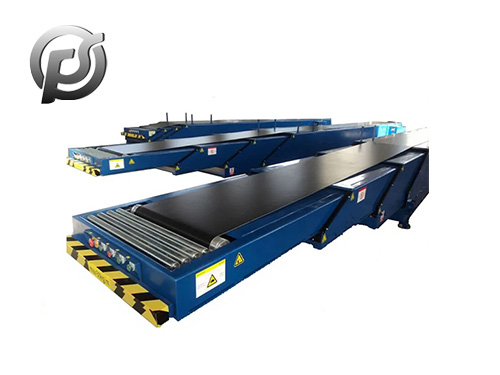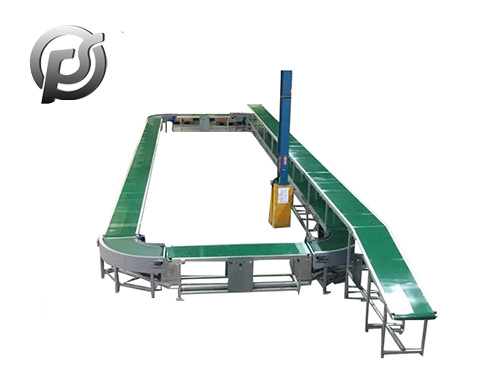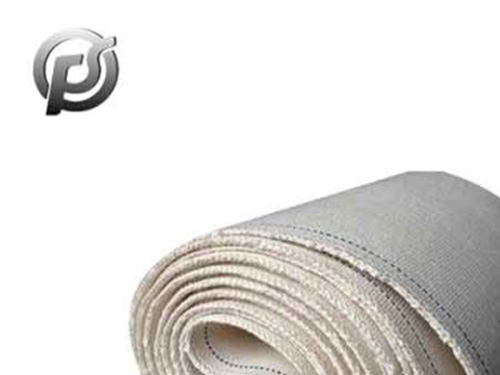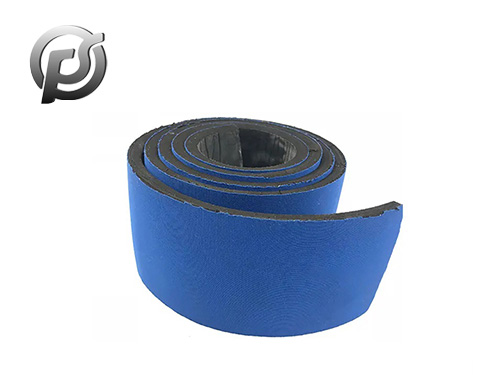In the working process of
belt conveyor, if there is a sudden stop or can not work normally, it will affect the normal operation of the whole production line and cause serious economic losses. Therefore, it is necessary to master the installation and operation technology, and be able to effectively solve common faults.
Installation and technical measures of belt conveyor:
1. Main installation sequence of belt conveyor
The installation sequence of the main body should be the first installation of the head frame, then the middle frame of each section, and finally the installation of the tail frame. Before installing the frame, the central position of the conveyor should be determined first, and all the operating centers of the conveyor should be in a straight line.
In the process of installing each rack, the longitudinal center of the conveying distance shall be consistent, and the longitudinal horizontal tilt Angle shall be within the allowable range.
The error range of single row frame to the center line should be plus or minus 0.1mm, and the error of the whole length of the conveyor to the center of the frame should be less than 35mm. Only after ensuring the correct placement of all single racks can all parts be connected. After the connection is completed, the firmness of the installation and the accuracy of the central position should be checked.
2. Installation of driving device
Should first determine the belt conveyor drive shaft and belt conveyor center line is vertical state, and ensure that the conveyor center line and drive drum width of the center is overlapping, and the traditional axis and the axis of the reducer should also be parallel state.
In addition, all shafts and rollers should be levelled first to ensure good operation without load and power. The horizontal error of the shaft should be within 0.5-1.5mm.
During the installation of the drive unit, the corresponding tensioning device can also be installed at the same time. The center line of belt conveyor and the axis of the roller of the tensioning device should also be vertical.
3. Installation of idlers in all parts
This step is a very important part of the installation of the belt conveyor, which has an important impact on the working efficiency and service life of the belt conveyor.
After installing the frame, transmission device and tensioning device successively, the operation of installing the idlers and the upper and lower idlers should be carried out. The conveyor belt should gradually take the shape of a curved arc, and the spacing of the idlers in the bending section should be half of the normal idlers. After installation, it should ensure that it has enough flexibility and reliability.
4. Debugging work after installation
In the process of installing the frame, drum and roller, the following conditions should also be met:
(1) All rollers should be kept parallel and arranged in rows with each other;
(2) All rollers should also be kept in a horizontal and parallel state, and arranged in rows with each other;
(3) The rack can be installed on the floor or foundation after the completion of the current preparatory work. After the belt conveyor is fixed, the feeding device and unloading device can be installed.
(4) All supporting structural frames should be kept horizontally parallel and in a straight line state, so when the installation of driving roller and idler frame is completed, the horizontal position and central position of the conveyor should be corrected immediately.
In addition, the idling test machine should be operated in advance to ensure that the conveyor belt does not run off. At the same time, the running rules of idlers, the contact degree between the conveyor belt surface and the guide plate, the running temperature of the driving part and other parameters should also meet the requirements of use. Necessary debugging work should be carried out. Only after everything is confirmed, can you run the test machine.
 Custom Conveyor Belts: Enhancing Efficiency and Productivity
Custom Conveyor Belts: Enhancing Efficiency and Productivity
 Stone Belt Conveyor: Efficient Material Handling Solution for Mining and Construction
Stone Belt Conveyor: Efficient Material Handling Solution for Mining and Construction
 Exploring the Dynamics of Conveyor Belt Manufacturing in China
Exploring the Dynamics of Conveyor Belt Manufacturing in China
 PE Conveyor Belts: Characteristics, Applications, and Advantages
PE Conveyor Belts: Characteristics, Applications, and Advantages